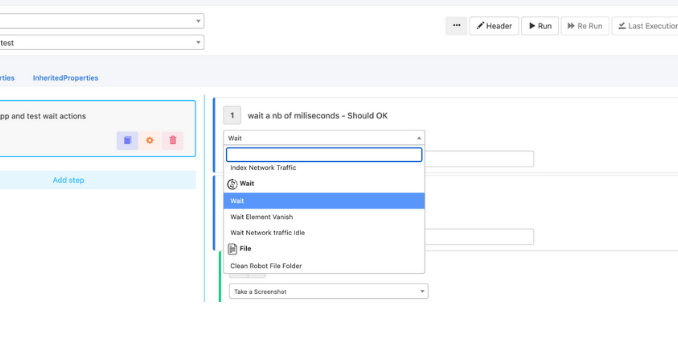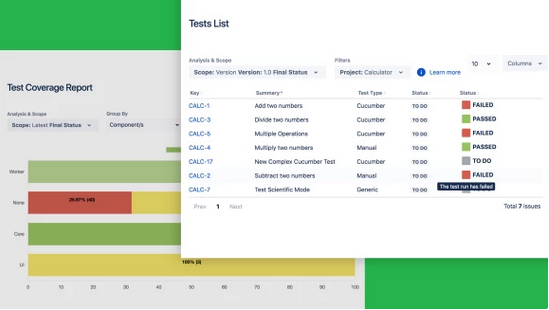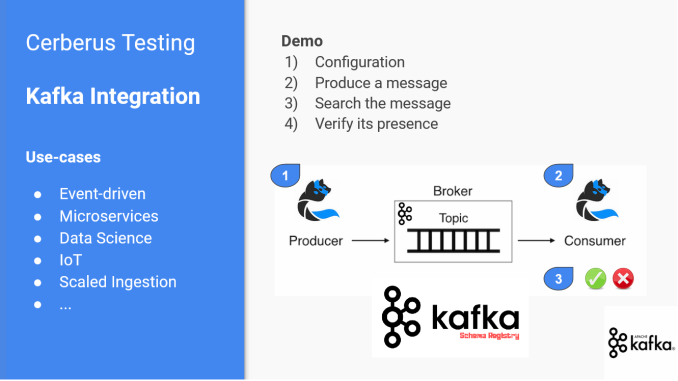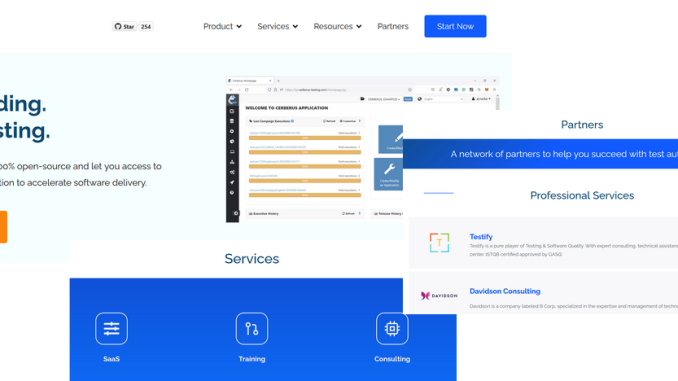The world of automated testing is booming. With a worldwide market of 20.70 billion euros in 2021¹ and an estimated annualized growth of 19% by 2030¹, the deployment of automated tests is becoming part of the top priorities to help companies accelerate their transformation.
Author: Antoine Craske
The significant contributions of test automation reported in the World Quality Report 2022-23² are to contribute to the implementation of a CI/CD approach (55%²) and the improvement of the value of tests while reducing their number (53%²).
The best value of automated tests is captured through the implementation of functional tests (46%²) and integration tests (45%²). These test typologies are precisely those supported by Cerberus Testing, the 100% open-source test automation platform.
The new Cerberus Testing 4.15 release offers a series of new features and improvements to allow as many people as possible to accelerate with quality by improving the accessibility and ease of setting up automated tests of modern software engineering teams.
More intuitive user journeys
The philosophy of Cerberus Testing is to facilitate cross-functional collaboration on automated tests around a shared interface. Usability, intuitivity, and onboarding have been a major focus of this new version, especially for easing the adoption for new users of the platform.
The vision of the experience is that of an “Amazon 1-click” allowing to “create, execute, visualize an automated test in less than 30 seconds” for any user, whether or not they are familiar with the solution, removing any friction on automation journeys.
Figure 1: The Cerberus Testing test journey becomes less technical and more intuitive.
This new version realizes this promise for web application testing thanks to the redesign of the test experience journey and a functional-driven automation library. Future enhancements will support more advanced use cases, such as mobile and API testing working directly in the cloud.
As the success of a test automation approach depends on its ease of use (39%²) and the skills of the team (34%²), these improvements will allow many more people in software teams to automate tests without requiring them to be technical or have to code test scripts.
The JIRA/Xray connector now available
Xray is a plugin natively integrated into JIRA to support team collaboration on requirements and acceptance criteria. This widely deployed plugin supports the definition of test cases for manual or automatic executions in Gherkin format.
The connector makes it possible to trigger the execution of Cerberus Testing tests from Xray and to collect the results centrally. This approach keeps each solution focused on its added value and facilitates the deployment of automated tests in cross-functional teams.
Figure 2: Cerberus Testing integration with JIRA/Xray provides integrated reporting.
The integration between the two platforms requires a minimal configuration to activate a bi-directioal collaboration. Both “Cloud” and “DC” (Datacenter) versions are supported to allow as many people as possible to benefit from this new integration.
This connector adds to the family of integrations available in Cerberus Testing in the category of Test Management, such as XStudio, giving teams the flexibility to add solutions according to their maturity.
Avro’s support for Apache Kafka
The need for faster transformations and massive data processing accelerates the deployment of so-called “event-driven” architectures. The asynchronism specific to this paradigm changes how tests must be designed and implemented.
In this ecosystem, Apache Kafka® is one of the major platforms supporting massive connectivity of producers and consumers, exchanging messages without defined structures or defined via “Avro” schemas.
Figure 3: Cerberus Testing with Apache Kafka and Avro.
For several years Cerberus Testing has supported the testing of “event-driven” and “microservices” components with Apache Kafka, being also open-source. This new version brings in main novelty the support for the Avro schemas.
Other improvements are also available, such as the centralized management of the Kafka configuration to facilitate its maintainability or the possibility of searching and testing elements present on the “headers” of messages.
Multiple enhancements to advanced use cases
“The devil is in the details” is a valid adage for test automation. The use cases encountered in business and enterprises are often far from the nominal and relatively standard cases encountered in tutorials.
Image recognition, file manipulation, or multi-criteria validation tests are all complex examples that many testers have to deal with in their companies, and know how to ensure their long-term implementation.
Figure 4: Improvements made at the Sikuli.
The image recognition available in Cerberus Testing now allows you to target a specific offset on the screen, activate a delay for “keypress” type actions, or facilitate character recognition with spacing.
There are also improvements for test cases that require uploading and downloading files, new checks for lists of numeric values, and batch test execution relaunch from the interface – all features aligned with the mantra “Stop Coding, Start Testing”.
A new version, but also a new site
This new version follows a complete redesign of the Cerberus Testing website for better readability and access to the platform’s documentation and resources. Training offers and available partners are also visible and identified on the site to accelerate enterprises deployment.
Figure 5: The new Cerberus Testing website.
This new version is in the continuity of the philosophy of providing a scalable test automation platform supporting agile and DevOps approaches in which the cross-functional collaboration of actors around quality brings software acceleration with confidence.
The version will be presented in the community meetups where the Cerberus Testing user community meets regularly to share new features and provides replays of previous events on Youtube where all users, wherever in the discovery or expertise phase, are welcome.
The following versions will complement user journeys to facilitate and accelerate the deployment of automated tests for teams constantly seeking to improve their quality and speed of delivery.
The team remains available to help the community to accelerate.
About the Author: Antoine Craske is the founder of the QE Unit, the Quality Engineering community. Co-founder of Cerberus Testing. Passionate about architecture, transformation, and technologies. Convinced that software quality makes it possible to accelerate, that it must be addressed transversally, and that open source allows us to find more effective solutions to common problems.
References
¹ Polaris Market Research (2021), Automation Testing Market Share, Size, Trends, Industry Analysis Report, By Testing Type
² The World Quality Report 2022-23 (2022), Sogeti.







Hi, Thank you for sharing this wonderful blog….